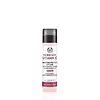What's inside
What's inside
 Key Ingredients
Key Ingredients

 Benefits
Benefits

 Concerns
Concerns

 Ingredients Side-by-side
Ingredients Side-by-side

Ethylhexyl Salicylate 5%
UV AbsorberOctocrylene 3%
UV AbsorberButyl Methoxydibenzoylmethane 2%
UV AbsorberRicinus Communis Seed Oil
MaskingOlea Europaea Fruit Oil
MaskingBeeswax
Emulsion StabilisingHydrogenated Coconut Oil
EmollientEuphorbia Cerifera Wax
C12-15 Alkyl Benzoate
AntimicrobialCaprylic/Capric Triglyceride
MaskingTocopheryl Acetate
AntioxidantAmmonium Glycyrrhizate
MaskingTriticum Vulgare Germ Oil
EmollientVanilla Planifolia Fruit Extract
Skin ConditioningCalendula Officinalis Flower Extract
MaskingEchinacea Purpurea Extract
MoisturisingTocopherol
AntioxidantGlycine Soja Oil
EmollientEthylhexyl Salicylate 5%, Octocrylene 3%, Butyl Methoxydibenzoylmethane 2%, Ricinus Communis Seed Oil, Olea Europaea Fruit Oil, Beeswax, Hydrogenated Coconut Oil, Euphorbia Cerifera Wax, C12-15 Alkyl Benzoate, Caprylic/Capric Triglyceride, Tocopheryl Acetate, Ammonium Glycyrrhizate, Triticum Vulgare Germ Oil, Vanilla Planifolia Fruit Extract, Calendula Officinalis Flower Extract, Echinacea Purpurea Extract, Tocopherol, Glycine Soja Oil
Ingredients Explained
These ingredients are found in both products.
Ingredients higher up in an ingredient list are typically present in a larger amount.
Beeswax is natural wax produced by honey bees and can be synthetically created. It consists mainly of fatty acid esters and long-chain alcohols.
In cosmetics, beeswax is a emollient. Due to its waxy structure, it creates a protective barrier. This barrier prevents water from evaporating off the skin.
This may not be a good ingredient for oily skin. We recommend speaking with a professional if you have concerns.
Beeswax cannot be removed with water, but can be taken off with an oil cleanser.
Beeswax is also antiseptic and contains vitamin A.
Learn more about BeeswaxCalendula Officinalis Flower Extract comes from the common Marigold plant. This ingredient is a skin conditioner.
Marigolds contain flavonoids. Flavonoids are a group of substances found naturally in plants. They possess antioxidant and inflammation properties.
This ingredient soothes skin inflammation by inhibiting inhibiting a part of the inflammation process.
Marigolds have been used in traditional medicine throughout Asia and Europe.
Learn more about Calendula Officinalis Flower ExtractRicinus Communis Seed Oil is the INCI name for castor oil.
Castor Oil helps moisturize the skin. It is rich in a fatty acid called ricinoleic acid. This fatty acid helps prevent moisture loss on the skin. This helps keep your skin soft and hydrated. Ricinoleic acid also has anti-inflammatory and pain reducing properties.
Besides hydrating the skin, castor oil is also used to hydrate hair. By keeping the hair shaft moisturized, breakage is decreased. More studies are needed to show castor oil's effective on stimulating hair growth.
Castor oil is created by cold-pressing castor seeds and then purifying the oil with heat. It was used in Ancient Egypt as fuel in lamps and to help treat eye irritation.
The term 'fragrance' is not regulated in many countries. In many cases, it is up to the brand to define this term. For instance, many brands choose to label themselves as "fragrance-free" because they are not using synthetic fragrances. However, their products may still contain ingredients such as essential oils that are considered a fragrance.
Learn more about Ricinus Communis Seed OilTocopherol (also known as Vitamin E) is a common antioxidant used to help protect the skin from free-radicals and strengthen the skin barrier. It's also fat soluble - this means our skin is great at absorbing it.
Vitamin E also helps keep your natural skin lipids healthy. Your lipid skin barrier naturally consists of lipids, ceramides, and fatty acids. Vitamin E offers extra protection for your skin’s lipid barrier, keeping your skin healthy and nourished.
Another benefit is a bit of UV protection. Vitamin E helps reduce the damage caused by UVB rays. (It should not replace your sunscreen). Combining it with Vitamin C can decrease sunburned cells and hyperpigmentation after UV exposure.
You might have noticed Vitamin E + C often paired together. This is because it is great at stabilizing Vitamin C. Using the two together helps increase the effectiveness of both ingredients.
There are often claims that Vitamin E can reduce/prevent scarring, but these claims haven't been confirmed by scientific research.
Learn more about Tocopherol